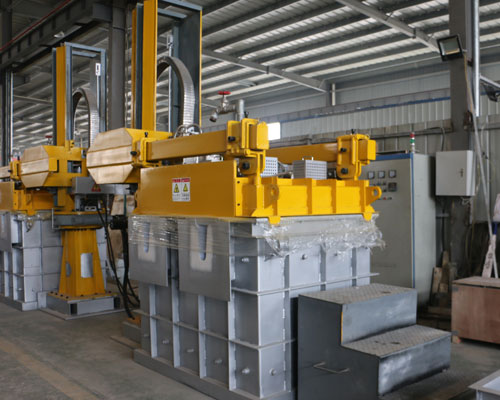Online degassing equipments can improve metal quality, reduce melt loss from dross and optimize cast parts. Online degassing helps remove hydrogen, inclusions and alkali metals from molten aluminium to improve metal quality.
Aluminum and its alloys are susceptible to a unique form of chemical corrosion called hydrogen-induced cracking, which is caused by the gradual diffusion of hydrogen (H) molecules through the metal’s crystal lattice. This will produce local defects in the alloy, which greatly weakens its tensile strength and ductility, thereby increasing the risk of surface cracking. Although it is a solid, the hydrogen solubility of aluminum is negligible. However, molten aluminum is an extremely reactive substance that can actively decompose moisture to produce hydrogen (H).
The melt in the process of molten aluminum may absorb hydrogen in the atmosphere and decompose and collect or condense the water on tools such as conveying ladle or crucible furnace. If the melt absorbs excess hydrogen, it may affect the porosity of the final product and result in increased scrap. It is not feasible to eliminate the absorption of gas in molten aluminum, so metallurgists work to remove hydrogen from the melt before casting.
In the online degassing process, inert gasses are pumped into aluminium melts to remove hydrogen and prevent subsequent porosity in cast parts. Generally, the gasses are diffused through rotors to maximize gas efficiency. Online degassing equipments also help to lift other impurities, such as oxides, to the surface of the melt where they are skimmed and removed.
The purpose of the degassing of the rotating rotor is to break up the large inert gas bubbles into very fine small bubbles and make them evenly dispersed in the molten metal. By reducing the bubble diameter, the surface of the purified gas is actively enlarged, which makes more inert bubble surfaces come into contact with the hydrogen and impurities in the molten metal, thereby bringing these harmful substances to the surface of the liquid.

